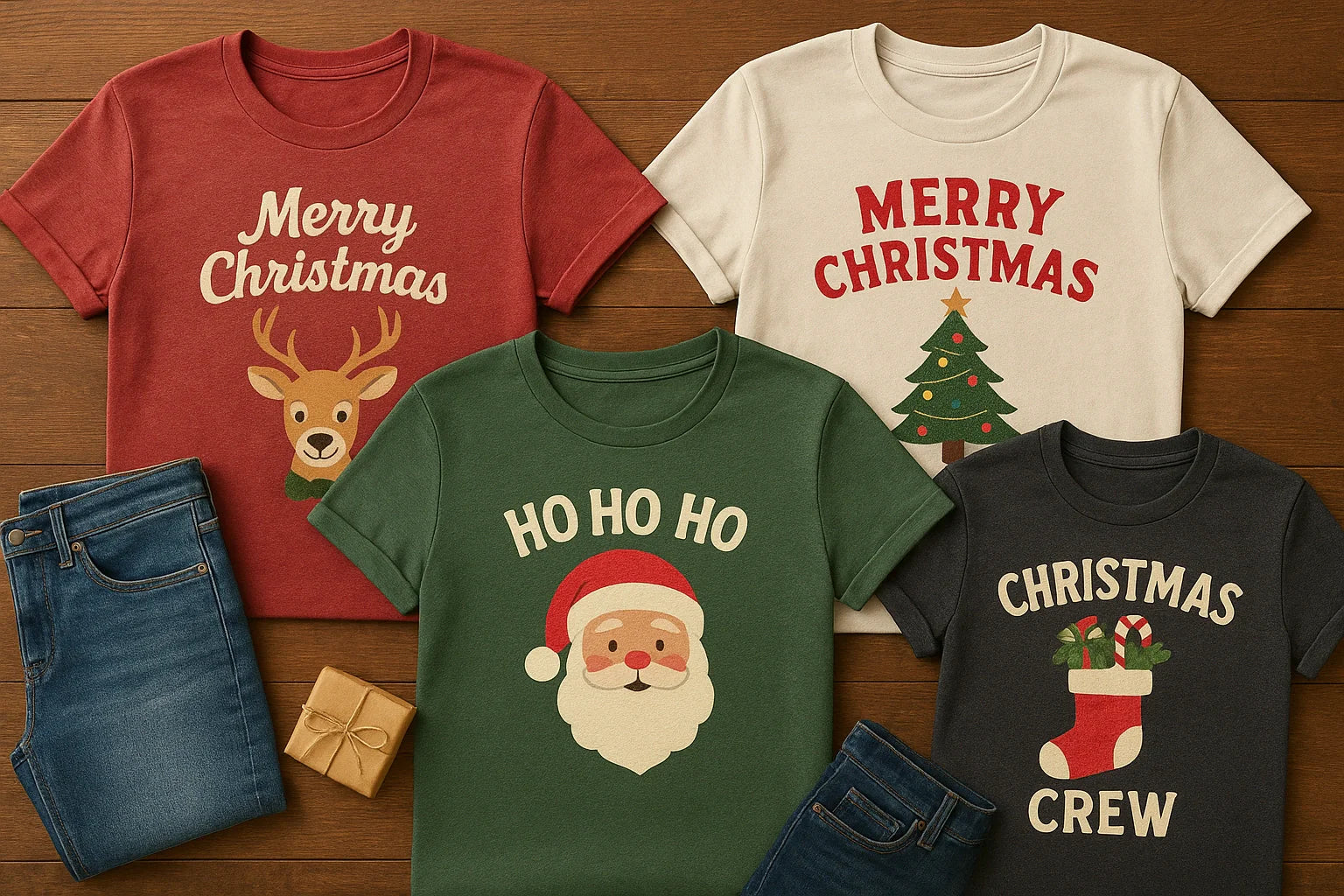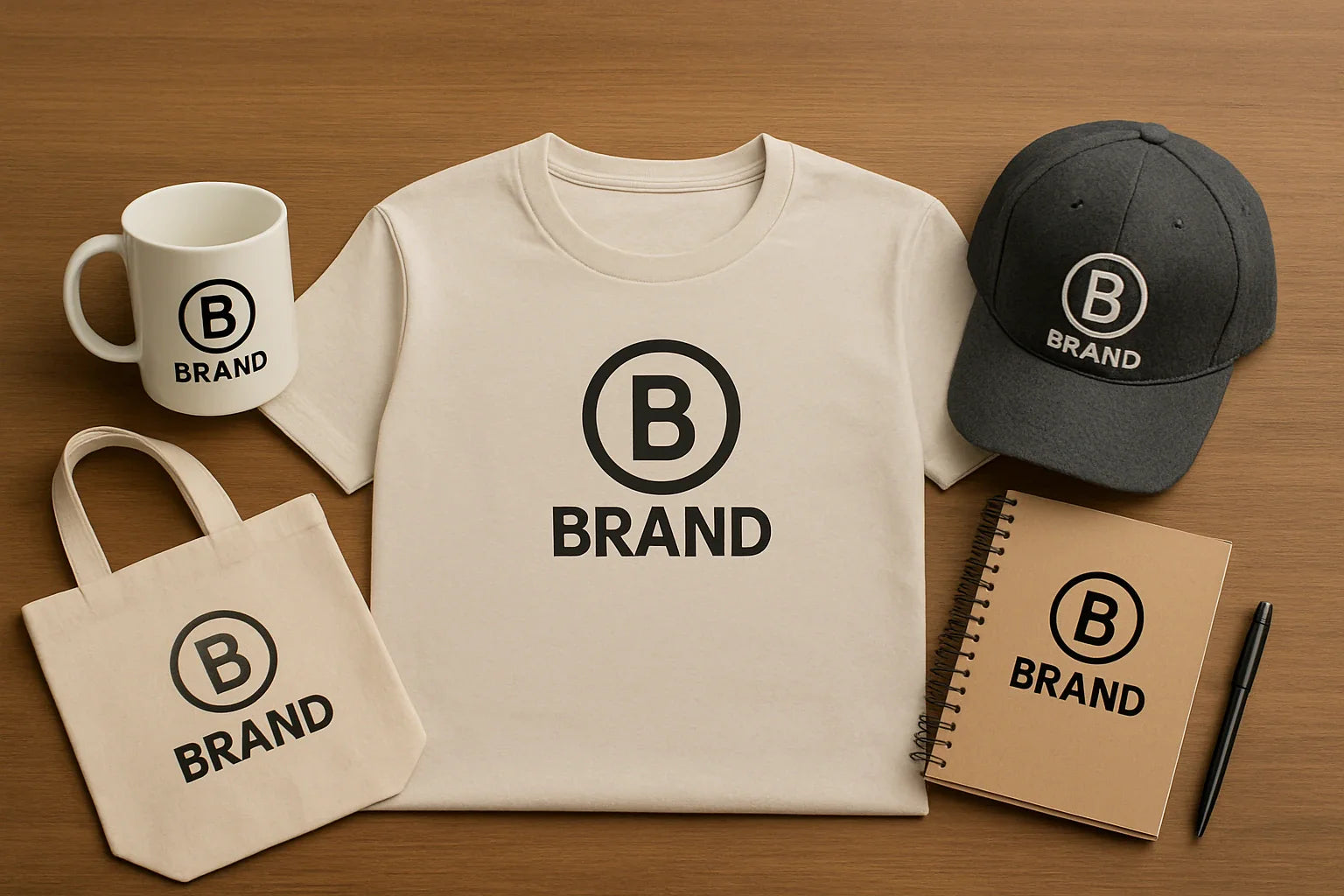Introduction
DTG T-Shirt Printing is a modern method of creating high quality custom apparel where designs are printed directly onto fabric using advanced digital technology. Unlike traditional screen printing, DTG allows full-color, photo-quality images to be applied to T-shirts with no limits on detail or complexity.
This makes custom DTG printing perfect for small batches, one-off designs, or fast DTG on demand orders. Whether you’re launching a DTG printing business, designing a custom DTG shirt, or ordering DTG printed t-shirts online, the process is simple, flexible, and delivers professional results.
What sets DTG apart is its ability to produce vibrant, soft-to-touch prints without minimum order requirements. That’s why businesses, clothing brands, and individuals trust DTG for custom DTG shirts, personalized gifts, and branded merchandise.
If you’re curious about how DTG works, why it’s popular, or where to find reliable DTG T-Shirt Printing in Brooklyn, this guide will walk you through everything — from techniques and tips to costs and comparisons.
Key Takeaways
- DTG T-Shirt Printing delivers vibrant, detailed designs directly on fabric.
- Best results come from 100% cotton shirts and high‑resolution artwork.
- No minimum orders — perfect for one‑off custom DTG shirts or small batches of DTG custom tees.
- Eco‑friendly water‑based inks make custom DTG printing a sustainable choice.
- Average cost ranges $2–$5 per shirt, with dark/photo prints priced higher.
What Is DTG Printing?
DTG printing, or Direct-to-Garment printing, is a modern digital printing method that applies ink directly onto a T-shirt using a specialized inkjet printer. Instead of using screens or vinyl, DTG works just like a regular desktop printer—only it prints on fabric. The water-based ink soaks into the fibers of the shirt, giving you a soft, detailed, and long-lasting print.
DTG is especially popular for designs with lots of colors, gradients, or photographs because it can capture even the smallest details. Whether you want a single custom shirt or a batch of DTG custom tees, this method delivers clean, vibrant results without any complicated setup.
How DTG T-Shirt Printing Works
At first glance, DTG T-Shirt Printing might sound technical, but the process is actually simple and straightforward. Here’s how it works step by step:
Step 1: Design Preparation
The journey begins with your artwork. Upload a high-resolution design (300 DPI is ideal) to ensure crisp, clear results. This step is especially important for DTG custom prints, where fine details and vibrant colors make all the difference.
Step 2: Pretreatment
Before printing, the shirt is treated with a special solution. Pretreatment helps the ink bond with the fabric and enhances color vibrancy — particularly on dark-colored garments. Without this step, even the best custom DTG shirt designs may look dull or fade quickly.
Step 3: Printing
Next, the garment is placed into the DTG printer. Using water-based inks, the printer sprays the design directly onto the fabric with pinpoint accuracy. This method allows for full-color, detailed images without limits on complexity, making it ideal for dtg printing online services and one-off orders.
Step 4: Curing
Once printed, the shirt is cured using a heat press or conveyor dryer. Curing locks the ink into the fibers of the fabric, ensuring the design is durable, long-lasting, and resistant to cracking or fading.
Step 5: Quality Check
Finally, each shirt undergoes a quality inspection. Print alignment, color accuracy, and durability are checked to guarantee that every DTG printed T-shirt meets professional standards before reaching the customer.
Benefits of DTG Printing
DTG T-Shirt Printing isn’t just a modern alternative — it offers unique advantages that make it perfect for custom apparel. Here’s why so many people and brands love it:
1. High-Quality Prints
DTG delivers sharp, detailed designs with smooth gradients, making it ideal for logos, illustrations, or even photographs. Every DTG printed T-shirt looks professional, vibrant, and soft to the touch.
2. Full-Color, Detailed Designs
Unlike traditional methods, custom DTG printing can handle complex, multi-colored artwork without limitations. Whether it’s gradients, fine lines, or photo-quality images, DTG custom prints capture every detail beautifully.
3. No Minimum Orders
One of the biggest advantages of DTG is flexibility. You can print a single custom DTG shirt or a batch of DTG custom tees without worrying about setup costs. This makes it perfect for small businesses, artists, or anyone testing new designs.
4. Eco-Friendly Advantage
DTG uses water-based inks that are safer for the environment compared to plastisol or solvent-based inks. For brands and individuals who care about sustainability, dtg printing online is a greener choice that reduces waste while still delivering high-quality results.
Best Fabrics for DTG Printing
Choosing the right fabric is one of the most important steps in getting the best results with DTG T-Shirt Printing. The material you select affects how the ink absorbs, how vibrant the colors appear, and how long the design lasts.
1. Best Cotton Percentages
-
100% Cotton: This is the gold standard for custom DTG shirts. Cotton absorbs water-based ink beautifully, giving you sharp, vibrant colors and a soft finish.
- 80–90% Cotton Blends: These blends still work well for DTG custom tees, though the colors may appear slightly less vivid compared to pure cotton.
2. Blends to Avoid
Not all fabrics are DTG-friendly. For example:
- Polyester-heavy fabrics often resist ink absorption, leading to dull or uneven prints.
- Nylon or rough-textured materials don’t bond well with DTG inks, which can cause fading or patchy designs.
If you’re ordering DTG printing online, always check the fabric composition first to avoid disappointing results.
3. How Fabric Impacts Print Quality
The more cotton in the shirt, the softer and more vibrant the print will be. For businesses or personal projects offering DTG custom prints, investing in high-quality cotton shirts ensures professional-looking results every time. This simple choice can make the difference between a design that pops and one that looks flat.
DTG Printing Tips for Best Results
Getting perfect results from DTG T-Shirt Printing isn’t just about having the right equipment — it’s also about preparation and technique. Here are some proven tips to make sure your prints look amazing every time:
1. Design Preparation
Start with high-quality artwork.
- Use images at 300 DPI or higher for crisp detail.
- Save designs in PNG or TIFF format to preserve color accuracy.
- Avoid pixelated or low-resolution files, especially when creating custom DTG prints or personalized designs.
2. Resolution Recommendations
High-resolution designs ensure your DTG custom tees have sharp details and smooth gradients. Enlarging small images often leads to blurry results, so always design at the correct size from the start.
3. Pretreatment Tips
Pretreatment is essential for vibrant colors and long-lasting prints.
- Dark shirts should always be pretreated to make designs pop.
- Use the right amount of solution — too much can cause blotches, too little can make colors dull.
- Proper pretreatment ensures your DTG printed T-shirts maintain their quality over time.
4. Ink Curing Best Practices
Curing locks the ink into the fabric, keeping prints durable and soft.
- Follow the recommended temperature and curing time for your printer.
- Over-curing can cause cracking, while under-curing may lead to fading.
- Done correctly, curing keeps your custom DTG shirts looking professional and vibrant wash after wash.
DTG Printing Techniques You Should Know
To get the best results from DTG T-Shirt Printing, it’s important to understand the techniques that make your designs vibrant, durable, and professional. Here are the essentials:
1. Underbase Technique
When printing on dark-colored shirts, a white underbase layer is applied before the design. This ensures that colors stay bright and don’t get lost in the fabric. Most custom DTG shirts rely on this technique to achieve crisp, eye-catching prints.
2. Color Management
Consistency is key in custom DTG printing. Calibrated color profiles in the printer help maintain accuracy across multiple prints. Proper color management ensures that every DTG printed T-shirt looks exactly like the original design, whether you’re printing one or a hundred.
3. Handling Gradients & Photos
One of the biggest strengths of DTG is its ability to reproduce detailed images. Smooth gradients, photographs, and complex artwork come out sharp and realistic when paired with high-resolution files and proper pretreatment. This makes DTG custom prints perfect for designs that demand precision.
4. Techniques to Avoid Cracking or Fading
Durability depends on proper technique. To keep your custom DTG tees looking fresh:
- Avoid over-curing or under-curing the ink.
- Use high-quality cotton shirts instead of polyester-heavy blends.
- Always pretreat dark fabrics to ensure colors remain vibrant.
DTG Printing Costs
Understanding the cost of DTG T-Shirt Printing is essential whether you’re a business owner, designer, or simply creating custom apparel for personal use. Pricing can vary, but here’s a simple breakdown of what affects the final cost:
1. Factors Affecting DTG Pricing
-
Shirt Material: 100% cotton delivers the best results but is slightly more expensive than blends.
-
Print Size: Larger designs use more ink, which increases the cost.
-
Number of Colors: Multi-color or photo-quality prints cost more than single-color designs.
-
Order Quantity: DTG is ideal for small batches or one-off custom DTG shirts, while larger orders may be more cost-effective with screen printing.
- Pretreatment Requirements: Dark shirts require extra pretreatment and an underbase layer, which adds to the price.
2. Cost Per Print
On average, here’s what you can expect:
- Light-colored shirts: Lower cost since they don’t require heavy pretreatment.
- Dark-colored shirts: Higher cost due to the white underbase and pretreatment process.
- Photo or detailed prints: Premium pricing because of the extra ink and precision required.
3. Cost Comparison: DTG vs Other Printing Methods
|
Printing Method |
Average Cost per Shirt |
Best For |
Limitations |
|
DTG Printing |
$2–$5 |
Small batches, detailed designs, photos |
Less cost-effective for very large orders |
|
Screen Printing |
$1–$3 (bulk orders) |
Large runs, simple designs |
Setup costs, limited detail |
|
DTF Printing |
$2–$4 |
Versatile fabrics, durable prints |
Slightly heavier feel on fabric |
|
Embroidery |
$5–$10+ |
Premium branding, logos |
Limited to simple designs, higher cost |
Whether you’re ordering DTG custom tees, or producing DTG custom prints for your brand, understanding these cost factors helps you budget smarter and choose the right printing method for your needs.
Common DTG Printing Mistakes to Avoid
Even though DTG T-Shirt Printing is straightforward, some common mistakes can ruin your print quality. Avoiding these ensures your custom DTG shirts look professional and last longer.
1. Poor File Preparation
Using low-resolution images or incorrect file formats can result in blurry or pixelated prints. Always use high-quality designs for custom DTG printing.
2. Incorrect Pretreatment
Too much or too little pretreatment can cause colors to appear faded or uneven. Proper pretreatment is key, especially on dark shirts.
3. Using the Wrong Fabric
DTG works best on cotton or high-cotton blends. Polyester-heavy fabrics or rough-textured shirts can lead to poor ink absorption and dull prints.
4. Over/Under Curing
Incorrect heat pressing or curing can cause cracking, fading, or ink peeling. Following the manufacturer’s recommended temperature and time ensures durability.
Also Read: DTG Printing Explained: Complete Guide For 2025
Frequently Asked Questions (FAQ)
Q1. How long does DTG printing last?
Ans: DTG prints are durable and can last for years when washed properly. With correct pretreatment and curing, DTG printed T-shirts resist fading and cracking, keeping designs vibrant.
Q2. Is DTG better than screen printing?
Ans: DTG is better for small batches and detailed, multi-color designs, while screen printing is more cost-effective for large orders. For one-off DTG custom prints, DTG offers sharper detail and flexibility.
Q3. What fabrics work best for DTG printing?
Ans: 100% cotton shirts deliver the best results for custom DTG printing. Cotton absorbs ink well, giving bright colors and soft prints. Polyester-heavy blends should be avoided.
Q4. How much does DTG printing cost?
Ans: On average, DTG custom prints cost $2–$5 per shirt, depending on fabric type, design complexity, and pretreatment needs. Dark shirts and photo-quality designs are priced higher.
Conclusion
DTG T-Shirt Printing has transformed the way people create custom apparel. With its ability to deliver vibrant, detailed designs directly onto fabric, DTG makes it easy for anyone — from small businesses to clothing brands — to bring their ideas to life. Whether you’re ordering a single custom DTG shirt, producing DTG custom tees for your brand, or exploring dtg printing online, this method offers flexibility, eco-friendliness, and professional quality without the hassle of minimum orders.
The advantages of DTG Printing sharp prints, full-color designs, and durability that lasts. By choosing the right fabrics, preparing your artwork properly, and working with a trusted provider, you can ensure every DTG printed T-shirt looks as good as it feels.
At Aesthetic Bk, we specialize in custom DTG t-shirts in Brooklyn, offering fast turnaround, high-quality results, and personalized service for every project. Whether you need DTG on demand or bulk custom t-shirt, we’re here to help you create apparel that stands out.
Ready to start your custom apparel journey? Contact Aesthetic Bk today and let’s turn your designs into professional-quality prints.




Leave a comment
This site is protected by hCaptcha and the hCaptcha Privacy Policy and Terms of Service apply.